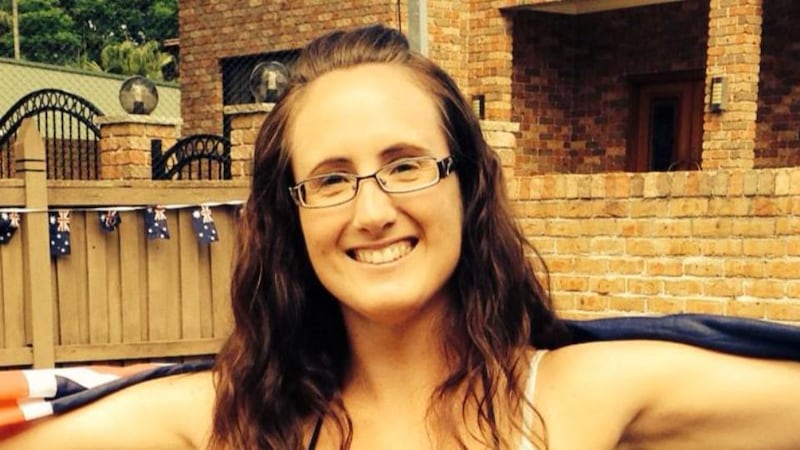As one of the world’s largest St Patrick’s Day celebrations, the Sydney parade and family day tomorrow will have all the trappings of an Irish festival, and more than 70,000 spectators are expected to line the streets of the Australian city. But among the floats and marching bands, Irish music and Irish dancing, a small group of Irish people will be lining up to do something that could appear rather unpatriotic at first.
Ireland’s national holiday may seem an odd day to choose to swear allegiance to another country, but for the dozens of Irish people who apply to become Australian citizens on St Patrick’s Day every year, it makes sense.
"I'm really proud to be Irish but delighted to be becoming part of Australia, " says Kim Galbraith, a 30-year-old office co-ordinator who will be one of more than 30 Irish to be conferred at the ceremony in Hyde Park tomorrow. "Pledging my loyalty to Australia is a big deal for me, and I wanted to make it special. I will have dual citizenship, so I wanted the Irish flag to be a part of the day as well."


Under both the Australian and Irish flags, and to the soundtrack of both national anthems, she and her fellow conferees will receive their citizenship certificates as well as a sapling of a native Australian tree, symbolising the roots they are putting down in their adoptive country.
“It is a ceremony embracing both cultures,” says Catherine Crosse, the event’s organiser and former president of the parade, who has been involved in the citizenship ceremony on St Patrick’s Day since it began in Sydney, eight years ago.
“It is such an important part of our culture to be Irish, but it is also a huge part of our present to be Australian. We make it really personalised and mention where the person is from when we are announcing them.”
As the young population of Irish people who have arrived in Australia in recent years becomes more permanent, many are opting to swear allegiance and become citizens. In the 12 months to last June, 1,796 Irish people were granted Australian citizenship, an increase of more than 600 on the previous year. Between last July and December alone, 1,188 people received their certificates. The numbers have been steadily rising since the early 2000s.
Crosse says it used to take up to six years to become a citizen; now applicants can secure permanent residency within nine months and citizenship a year later. “The government is pushing in favour of citizenship because our economy is heavily dependent on migrants, and retaining them when they come is important,” she says.
The increase in citizenship applications by Irish people is not confined to Australia. Although the numbers are much smaller in New Zealand, they have also shown a steady rise, from about 40 a year in the early 2000s to 143 last year.
US citizenship halving
The opposite trend is evident for the US, however: the number of Irish receiving dual citizenship in the United States has halved over the past decade, from 2,583 in 2003 to 1,239 in 2012. With visa restrictions making it difficult for young Irish to work legally in the country, this fall is unsurprising.
As Australian citizens, people gain the right to work in the public service or defence forces, vote in elections and run as political candidates. They can also come and go from the country as they please.
“The driving factor here is that citizenship allows people more freedom to leave for extended periods and still return to Australia,” says John McQuaid of Arrive Australia, a migration agency, who became a citizen himself in 1996. “And it gives their children or future children rights to become Australians.”
He still meets some older Irish who have never applied, mainly because before 1993 it meant swearing an oath of allegiance to the British monarch and, before 1984, becoming a British subject.
Swearing allegiance to Queen Elizabeth is still a requirement for people who want to become Canadian citizens, an oath some Irish people may be reluctant to take. Last year Michael McAteer, a 72-year-old retired journalist who has been living in Canada since leaving Dublin in 1964, brought a constitutional challenge with two other potential applicants who also objected to the oath. After a high-profile legal battle lasting several months, their case was dismissed. The applicants' problem, the judge said, "is not so much that they take the oath seriously. Rather, their problem is that they take it literally." (McAteer and his fellow potential applicants are appealing the decision.)
Nevertheless, the oath may be one reason why the numbers of Irish people obtaining Canadian citizenship are still relatively low: just 229 in 2012. Long waiting lists are also a problem, with more than 300,000 applicants of all nationalities currently in the system.
But Cathy Murphy of the Irish Canadian Immigration Centre in Toronto says the real reason numbers are so low is that this generation of emigrants just haven't been there long enough to be eligible. Applicants must have lived in the country for at least three of the past four years in order to apply.
Canada also makes it very easy for people to remain permanent residents without needing citizenship. "As long as you live in Canada two out of every five years, you don't have to be a citizen," says Murphy. "You can renew your residency yearly, so people might just not be bothered. But I think we will see some people becoming citizens if they decide to go back to Ireland to work but want to keep the option to return to Canada at some stage in the future."
Conflicting emotions
For people who decide to become citizens elsewhere, pledging loyalty to a country other than Ireland can raise conflicting emotions. Even after living in Ottawa for 10 years, Shane Morris, a Dubliner, says he was dreading the day when he would be made a Canadian citizen alongside his Israeli wife, Vardit.
“There is a finality to obtaining citizenship that can be interpreted as an act of having formally chosen another ‘home’,” says the 39-year-old, who is a director of policy on natural-resource projects for the Canadian government. “You can feel you are letting down your family – my parents miss their grandchildren, we miss family events, and special occasions are relegated to Skype.”
Morris and his wife tried to view the citizenship ceremony as just another step in the bureaucratic immigration process. “But when the day came we were taken aback by the meaningfulness of the event,” he says. “As a Canadian citizen I now feel formally accepted as part of the community that is Canada.”
Brendan Nee, a 33-year-old carpenter who received his Australian citizenship in 2011, was over the moon when he received his acceptance letter, but his family in Ireland struggled with the idea. They flew over from Connemara for his ceremony, which he chose to have on St Patrick's Day in Sydney.
“The whole St Patrick’s Day thing made it easier for Mom and Dad, because for them it was both a proud and a sad day, to see their son becoming a citizen of a country on the other side of the world.”
Back in Sydney, Kim Galbraith has no such reservations as she prepares to take her oath tomorrow after nine years in Australia. “I’m not giving up anything by swearing loyalty to another country. If anything I’m gaining more. I feel proud and honoured to be part of Australia.”


















